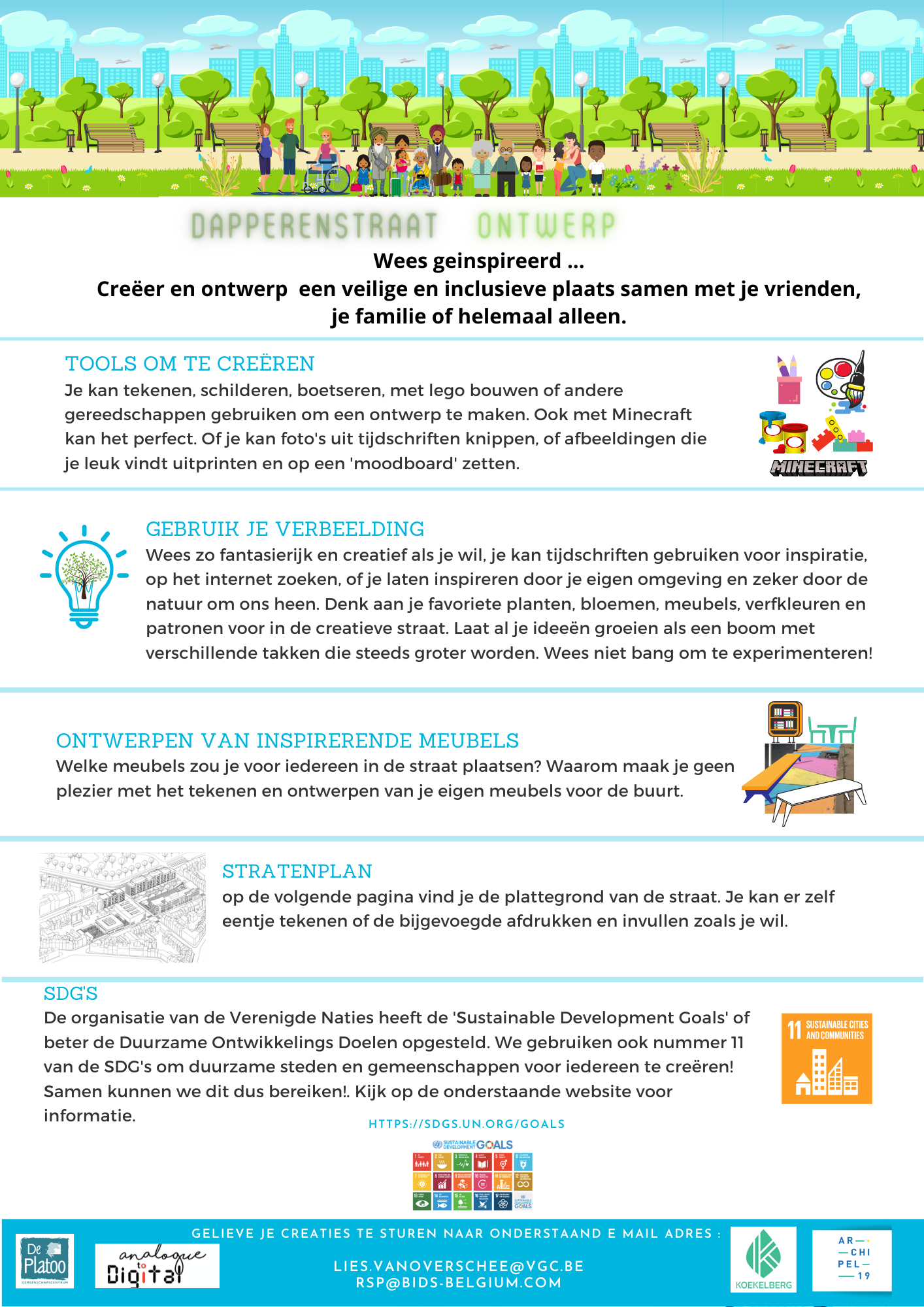Community Co-Design – Urban Street Design with Youth & Partners
Analogue to Digital Co-Design project with Dutch cultural partners Partners of G.C. Platoo, French cultural partners Achipel 19 and the Municipality of Koekelberg, Brussels. This project will also participate in the PlaceMake Earth initiative by Placemaking US and co.

Analogue to Digital has initiated a community participatory youth urban street design project, within our main organisation of the NGO BIDs Belgium and community partners.
Rue des Braves, is located in the municipality of Koekelberg in the North-West of Brussels. Rue des Brave (French) and Dapperenstraat (Dutch), has recently been approved by the Municipality of Koekelberg to be partially pedestrianized. Located in the leafy side of the municipality, which boasts the majestic Basilica of the Sacred Heart of Koekelberg, within Elisabeth Park. The street is located within a mixed area close to residential houses and apartments, a school complex and next to the community cultural centre.
The square at the top of the street has also been recently approved by Koekelberg municipality, to be renamed after the famous literary Brontë Sisters. The sisters came to Brussels in 1842 to study French. The square will be renamed to ‘Place des Soeurs Brontë. This contributes to the strategy of feminizing the street names of the municipality.

The co-designed participatory project will reach out to the local French and Dutch speaking primary schools. Collaborating with the local French and Dutch speaking cultural centres and also with collaboration from Koekelberg Municipality. Encouraging local youth and community to co-design during this experimental phase. Including outreach to adjoining municipalities for Special Needs Schools participation. Schools that previously participated in Analogue to Digital workshops. Diverse youth working together further contributes to the intrinsic values of inclusivity held by Analogue to Digital.
This initial project stage is experimental for the design of the street. The final urban design is due to commence in approximately 2 years time. Together with the municipality and relevant Brussels Region urban authorities of Perspective and respective consultants assigned to the project for this final phase implementation. Yet there will be hope that our experimental phase will contribute to the final stages of this urban project.

Encouraging this community initiative, whereby youth utilise both creative and digital methods with critical thinking of elements that are important to consider when designing a safe and inclusive street for the community. In line with Analogue toDigital methodology, from drawing, painting, clay-making to gaming / Minecraft and digital tools. Building from the 2D world to the 4D. From the concept ideation, to the furniture design, planters and various creative place-making options. Encouraging youth to think about the forms, shapes, colours with tactical urbanism, accessibility for young, old and those with disabilities, for both the furniture design and overall design options.
Also encouraging the education and importance bio-diversity and aspects of nature with green spaces for the environment and well-being in the City. Benefits of creative place-making and collaboration, can also encourage diverse youth to further install the ‘sense of place’, identity and sense of belonging within the community. Also emphasising respect to the environment.

The project hopes to commence in early Spring. Due to Covid-19 restrictions, it will be initiated online with youth working on this creative project within schools and homes. Teachers and Parents may also co-create with the children. Until a time post-covid, where youth can visit the location and potentially co-create, paint, pieces of furniture, the street and elements, with community builders. Placing and co-designing potentially for the Summer period where community can enjoy the fruits of their labour.
In line with our projects, this project will also be educating and linking to the Sustainable Development Goals – SDG’s. Emphasising the value of contributing to the creation of sustainable, resilient and inclusive communities.
This article is copied from the original post by Analogue to Digital. We will keep you updated of the project as we go along. If you would like to know more please contact: rsp@bids-belgium.com
Written by Rozina Spinnoy.












